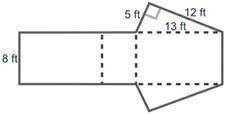
Mathematics, 22.06.2021 02:20 cvbnkifdfg
Which graph shows a negative rate of change for the interval 0 to 2 on the x-axis?
On a coordinate plane, a parabola opens up. It goes through (negative 6, 3), has a vertex of (negative 1.5 negative 3.75), and goes through (3.2, 4).
On a coordinate plane, a parabola opens up. It goes through (negative 5.5, 4), has a vertex of (negative 1, negative 3.2), and goes through (3.5, 4).
On a coordinate plane, a parabola opens up. It goes through (negative 1, 4), has a vertex of (2.5, 0.25), and goes through (5.8, 4).
On a coordinate plane, a parabola opens up. It goes through (negative 3.4, 4), has a vertex of (1.5, negative 3.75), and goes through (6, 3).

Answers: 2


Another question on Mathematics

Mathematics, 21.06.2019 17:20
Researchers were interested in whether relaxation training decreases the number of headaches a person experiences. they randomly assigned 20 participants to a control group or a relaxation training group and noted the change in number of headaches each group reported from the week before training to the week after training. which statistical analysis should be performed to answer the researchers' question?
Answers: 2

Mathematics, 21.06.2019 21:50
What is the missing reason in the proof? segment addition congruent segments theorem transitive property of equality subtraction property of equality?
Answers: 3

Mathematics, 21.06.2019 23:20
Predict which statements are true about the intervals of the continuous function. check all that apply
Answers: 3

Mathematics, 22.06.2019 02:00
Look at this system of equations. -3x + 3y = 12 y = x + 4 the solution set of this system is best explained by which of these statements? a) the graphs of the equations are the same line because the equations have the same slope and the same y-intercept. the system has infinitely many solutions. b) the graphs of the equations are parallel lines because they have the same slope but different y-intercepts. the system has no solution. c) the graphs of the equations are lines that intersect at one point because the equations have the same slope but different y-intercepts. the system has exactly one solution. d) the graphs of the equations are lines that intersect at one point because the equations have the same slope and the same y-intercept. the system has exactly one solution.
Answers: 2
You know the right answer?
Which graph shows a negative rate of change for the interval 0 to 2 on the x-axis?
On a coordinate...
Questions

English, 26.07.2019 11:30


Computers and Technology, 26.07.2019 11:30



Mathematics, 26.07.2019 11:30

Chemistry, 26.07.2019 11:30

Biology, 26.07.2019 11:30

Business, 26.07.2019 11:30

Biology, 26.07.2019 11:30


Business, 26.07.2019 11:30


History, 26.07.2019 11:30


History, 26.07.2019 11:30

Biology, 26.07.2019 11:30

History, 26.07.2019 11:30





